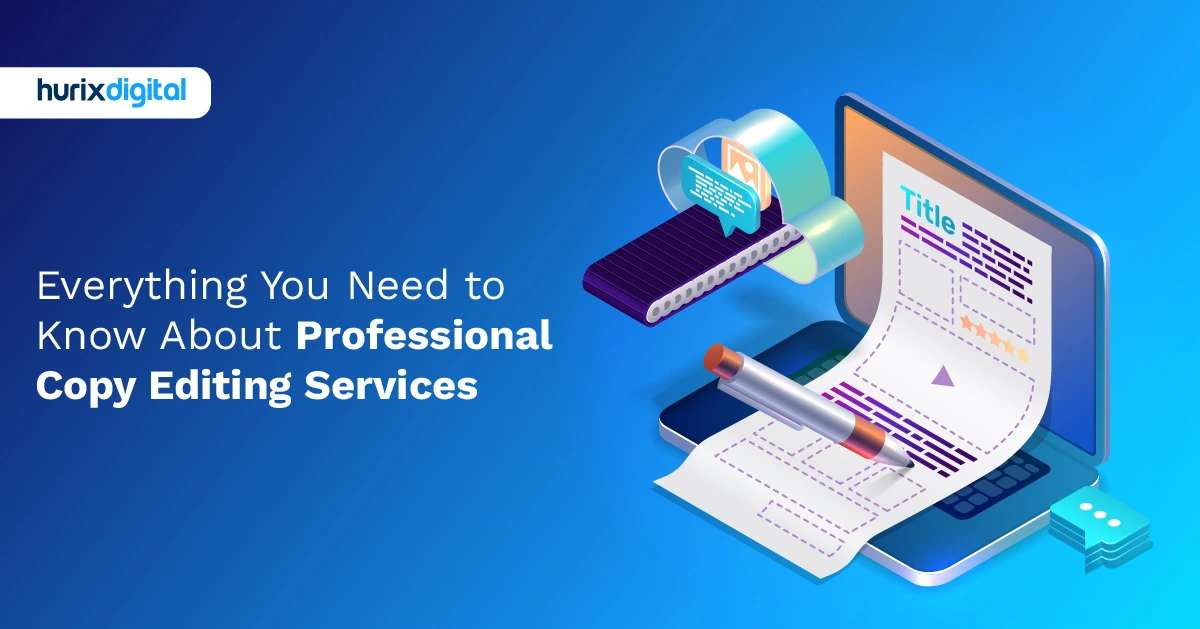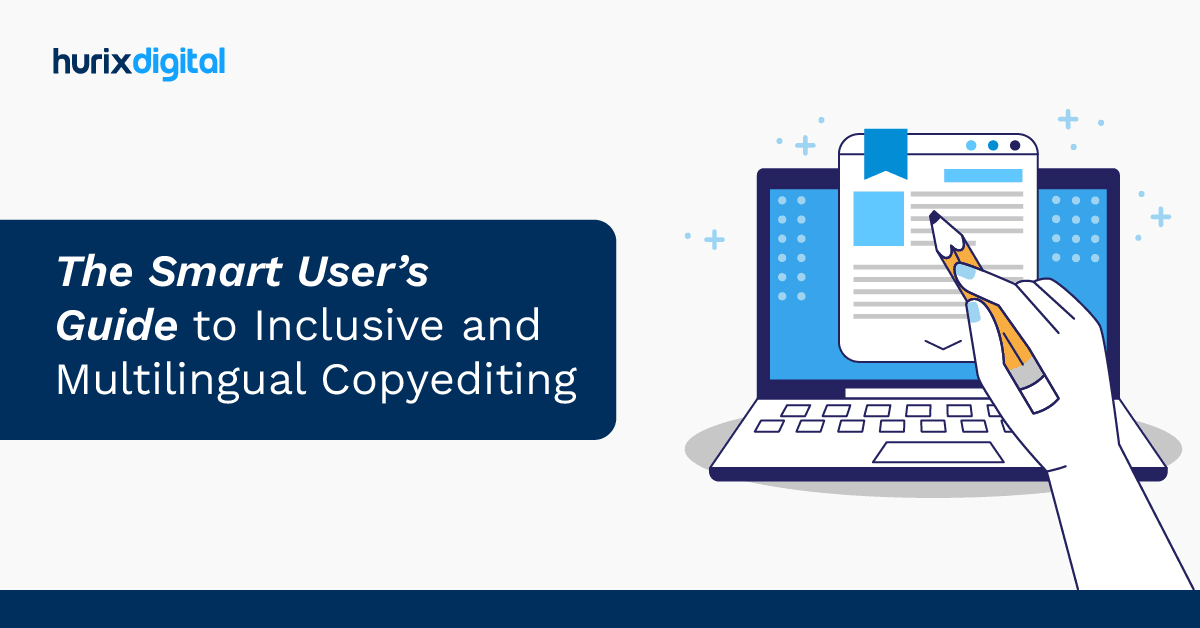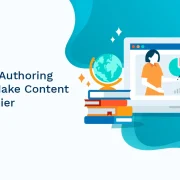
Top 4 Mistakes to Avoid in Copy Editing
As a writer, when you put in a lot of effort in writing the perfect manuscript or research paper, the last thing you want is your readers to get distracted by errors such as typos, spelling mistakes, grammar issues, or incorrect punctuation.
Such minor copyediting mistakes reduce the credibility of your publication, which is why copyediting is one of the most crucial aspects of the writing process. Copy editing refers to the process of reviewing a paper or any other piece of writing to ensure that it’s error-free.
Table of Contents:
– Why is Copy Editing Important?
– Top 4 Mistakes to Avoid While Copy Editing
1. Avoid Incorrect or Overuse of Pronouns
2. Punctuation Errors
3. Disorganization and Improper hyphenation
4. Avoid Structural Blunders
Copy editors check everything, from grammar, spelling, typos, punctuation, and more. It is an important part of the overall writing process and cannot be skipped. In this blog, we discuss copy editing along with some of the most common mistakes that writers need to avoid during this process.
Also Read: Best Practices in Professional Copy Editing 2023
Why is Copy Editing Important?
Copy editing is an important process that applies to a range of writing fields within the publishing industry. A professional copy editor needs to possess an expansive skillset involving detailed knowledge about the subject matter and strong attention to detail along with an ability to communicate their edits clearly and efficiently.
In general, various types of copy editing involve checking the following:
- Choice of words (correct usage, technical jargon or abbreviations that need to be explained, etc.)
- Mechanics (grammar, spelling, typos, punctuation)
- Writing style and consistency (active/passive voice consistency throughout the document, appropriate tone and word choice for the intended audience, etc.)
- The logical flow between ideas (checking for transitions and if they make sense)
- Text formatting (Capitalization, an appropriate division of sections, text size consistency, spacing of font, etc.)
- Clarity of writing (how easy is it to understand the main idea of sentences/paragraphs)
- Accuracy of facts, citations, or quotes.
Top 4 Mistakes to Avoid While Copy Editing
Here are some of the most common copyediting mistakes that writers/editors must avoid to maintain correctness, consistency, and completeness – The 3 Cs of copy editing.
1. Avoid Incorrect or Overuse of Pronouns
While copyediting, using incorrect pronouns or overusing pronouns can cause a lot of confusion, as readers may lose track of what you’re trying to convey or whom you are referring to. The other thing that you need to ensure is that the pronouns you are using in your writing match the nouns they are replacing.
The best approach here should be to re-read your sentence structures to make sure you can directly identify the person/object a pronoun is referring to. Similar to pronouns, commas are another useful tool that you can use to help guide your readers.
To avoid this, make sure to read and re-read your document, pause wherever you have used a comma, and see if you are pausing too often or not enough so that you can work on your usage of commas again.
2. Punctuation Errors
Punctuation in writing refers to a system of various symbols and marks used to enhance writing and to separate and clarify sentences and their meanings. To be able to write an error-free copy, the importance of using correct punctuation marks, including quotations, hyphens, and apostrophes, is huge.
The most common punctuation errors that copywriters need to avoid include mechanical quotation errors, misused/omitted or superfluous commas, poorly integrated quotations in writing, misplaced apostrophes, absent/dispensable hyphens, and unnecessary/missing capitalization.
To avoid these, it is important to master basic punctuation rules and use an editing tool, if necessary. Apart from this, it also makes sense to enhance your knowledge of spelling, grammar, and punctuation by undertaking a professional editing/writing course.
You might also like to read: Best Practices in Professional Copy Editing
3. Disorganization and Improper hyphenation
Another common mistake to avoid while writing your document is disorganization and improper hyphenation. It is important to include various organizational markers such as headings, subheadings, numbering, bullet points, and other formatting tools to help guide your reader through the outline and the organization of your document.
Likewise, another thing to make sure of is using hyphenation correctly, either to denote a time period, use prefixes with proper nouns, create a compound adjective, or when spelling out compound numbers. Also, it makes sense to avoid using spaces before or after hyphens in your sentences.
4. Avoid Structural Blunders
Once you are done writing, the organization and structure of your document might need multiple evaluations and corrections at different stages. This makes it important to know and differentiate the various editing levels so that you can achieve the goals you have set during each revision. The various editing levels and issues they resolve are as follows
- Line editing – During the multi-revisional stages of editing while focusing on the overall style/cohesiveness of writing from line to line.
- Structural, content, developmental, and/or story editing – During the outlining and initial evaluation of the overall piece’s presentation.
- Copy editing – During the final edit to ensure the accuracy of spelling, grammar, and punctuation from one sentence to the next before final formatting and publishing.
To Conclude
The main purpose of copyediting is to enhance and improve the overall quality of the content. Avoiding the above-mentioned copyediting mistakes ensures that various parameters such as structure, grammar, and consistency are well maintained, thus avoiding ambiguity, reducing chances of rejections, and improving the overall authenticity of your document.
You can also hire pre-editing and copy-editing service providers for accurate, polished, and impactful content. They provide efficient copy editing services that include analysis of the input, creation of style sheets, amendment of styles, language editing, editorial proofreading, and indexing of the content before being sent for the next process.

Vice President – Content Transformation at HurixDigital, based in Chennai. With nearly 20 years in digital content, he leads large-scale transformation and accessibility initiatives. A frequent presenter (e.g., London Book Fair 2025), Gokulnath drives AI-powered publishing solutions and inclusive content strategies for global clients








